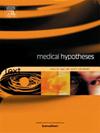视神经蛛网膜下腔测量作为椎体麻醉后硬脊膜穿刺后头痛的最佳预测指标
IF 2.1
4区 医学
Q3 MEDICINE, RESEARCH & EXPERIMENTAL
引用次数: 0
摘要
椎体麻醉是手术中常用的一种方法,因为它易于给药,见效快,肌肉松弛,疼痛控制。然而,硬脊膜穿刺后头痛(PDPH)是椎体麻醉后常见的并发症。PDPH的主要机制是脑脊液(CSF)通过硬脑膜穿刺部位渗漏,导致颅内压(ICP)下降。典型的症状包括头痛,坐下或站立时加重,躺下时好转,同时可能出现颈部僵硬、恶心和畏光。视神经蛛网膜下腔(ONSS)位于眶内眼球后方,充满脑脊液,与颅蛛网膜下腔连续。在讨论眼相关疾病时,该空间的压力通常被称为眼内压(IOP),在考虑视神经蛛网膜下腔时,通常在其与ICP的关系中讨论。因此,通过视神经鞘直径(ONSD)测量ONSS内的压力可能是PDPH的最佳预测指标,可能是反映椎体麻醉后颅内压变化的有效方法,为准确预测和预防PDPH提供有价值的信息。本文章由计算机程序翻译,如有差异,请以英文原文为准。
Optic nerve subarachnoid space measurement as the best predictor of post-dural puncture headache after intravertebral anesthesia
Intravertebral anesthesia is a commonly used method during surgery due to its easy administration, rapid effects, muscle relaxation, and pain control. However, post-dural puncture headache (PDPH) is a frequent complication following intravertebral anesthesia. The primary mechanism of PDPH is the leakage of cerebrospinal fluid (CSF) through the dural puncture site, leading to a decrease in intracranial pressure (ICP). Symptoms typically include a headache that worsens when sitting or standing and improves when lying down, along with possible neck stiffness, nausea, and photophobia. The optic nerve subarachnoid space (ONSS), located behind the globe of the eye within the orbit, is filled with CSF and is continuous with the cranial subarachnoid space. The pressure in this space, often referred to as intraocular pressure (IOP) when discussing eye-related conditions, is typically discussed in the context of its relation to ICP when considering the optic nerve subarachnoid space. Therefore, the measurement of pressure in the ONSS by optic nerve sheath diameter (ONSD) may serve as the best predictor for PDPH, which might be an effective way to reflect changes in intracranial pressure after intravertebral anesthesia, offering valuable information for accurate prediction and prevention of PDPH.
求助全文
通过发布文献求助,成功后即可免费获取论文全文。
去求助
来源期刊

Medical hypotheses
医学-医学:研究与实验
CiteScore
10.60
自引率
2.10%
发文量
167
审稿时长
60 days
期刊介绍:
Medical Hypotheses is a forum for ideas in medicine and related biomedical sciences. It will publish interesting and important theoretical papers that foster the diversity and debate upon which the scientific process thrives. The Aims and Scope of Medical Hypotheses are no different now from what was proposed by the founder of the journal, the late Dr David Horrobin. In his introduction to the first issue of the Journal, he asks ''what sorts of papers will be published in Medical Hypotheses? and goes on to answer ''Medical Hypotheses will publish papers which describe theories, ideas which have a great deal of observational support and some hypotheses where experimental support is yet fragmentary''. (Horrobin DF, 1975 Ideas in Biomedical Science: Reasons for the foundation of Medical Hypotheses. Medical Hypotheses Volume 1, Issue 1, January-February 1975, Pages 1-2.). Medical Hypotheses was therefore launched, and still exists today, to give novel, radical new ideas and speculations in medicine open-minded consideration, opening the field to radical hypotheses which would be rejected by most conventional journals. Papers in Medical Hypotheses take a standard scientific form in terms of style, structure and referencing. The journal therefore constitutes a bridge between cutting-edge theory and the mainstream of medical and scientific communication, which ideas must eventually enter if they are to be critiqued and tested against observations.
 求助内容:
求助内容: 应助结果提醒方式:
应助结果提醒方式:


